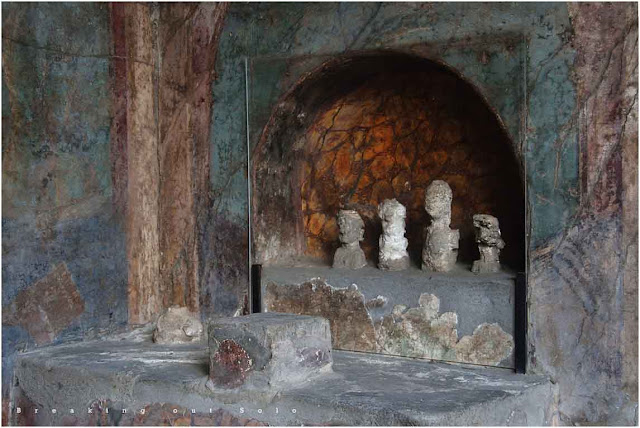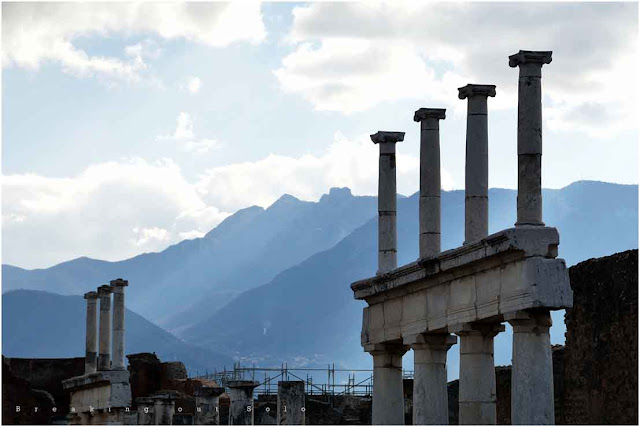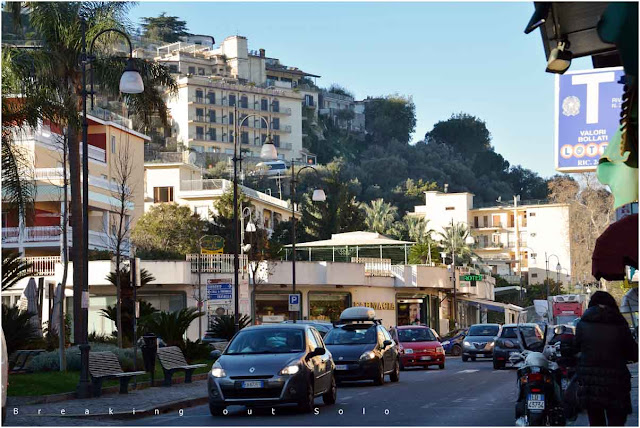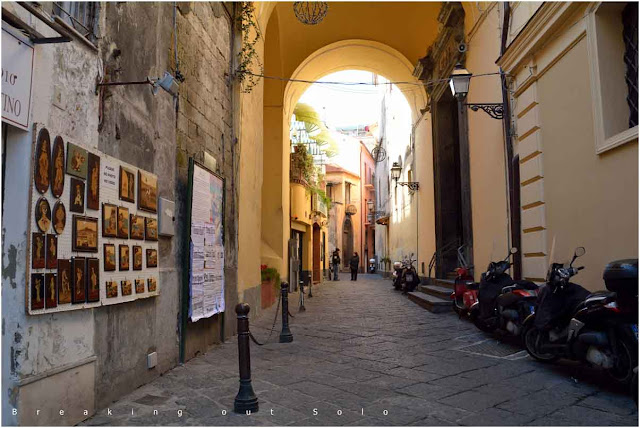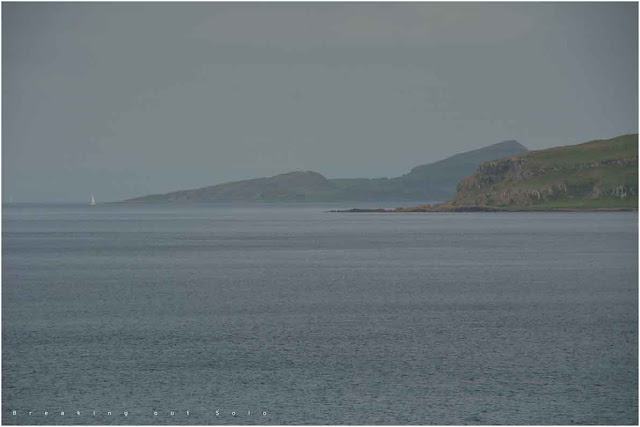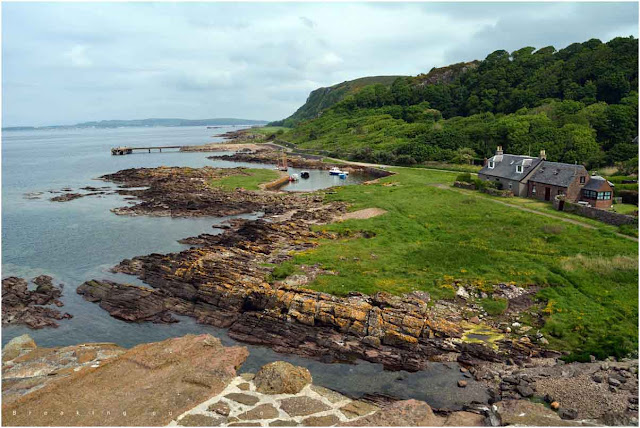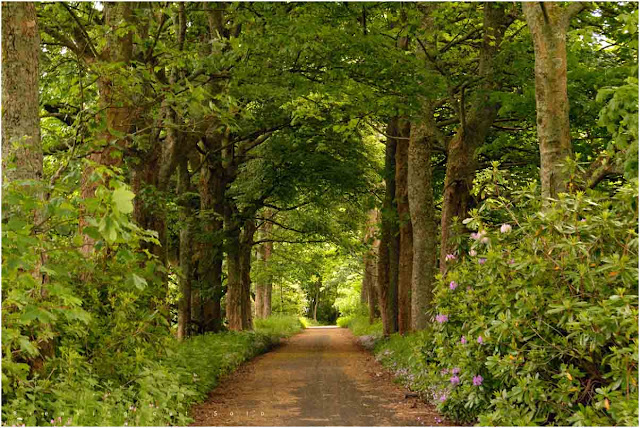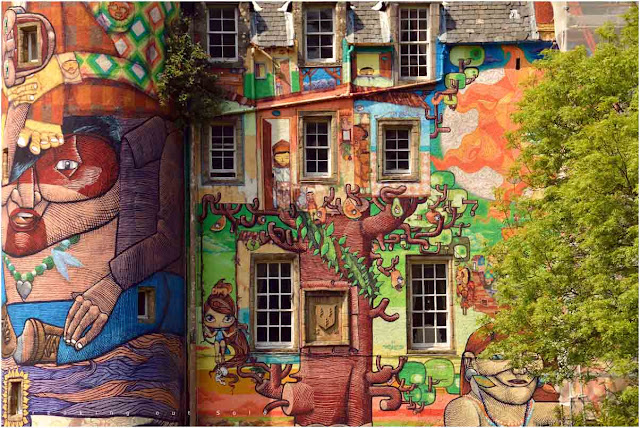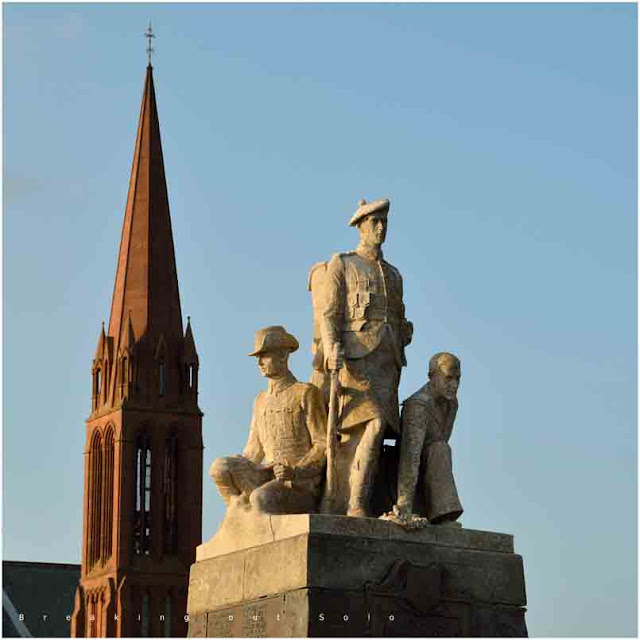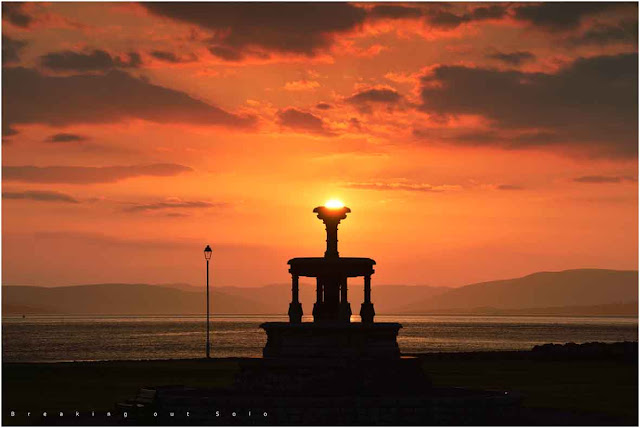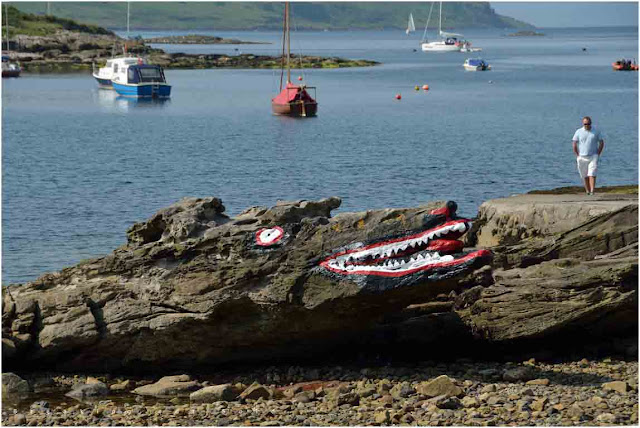"But if you close your eyes, does it almost feel like nothing changed at all?"
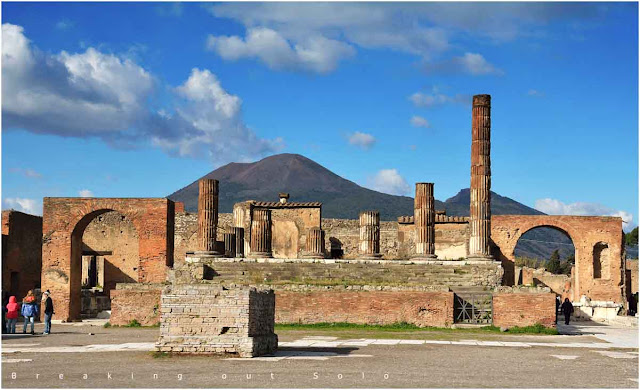 |
| Forum - Pompeii |
Life at work had barely returned to normal after the holidays. It had only been two weeks since my return from visiting Vienna, Bratislava and Prague over Christmas. I had a trip planned for Iceland later in the month too. With still a few days to use up on my Schengen visa before it expired, I needed a plan, and with back to back holidays, the plan had to be short. An extended weekend was all that I could afford, I figured. Decided my destination - Pompeii - a place I had always wanted to visit.
On this Saturday, five in the morning, I had already reached Edinburgh airport. I was flying in to Rome Ciampino as the Easyjet flights to Naples did not start until March. While sipping on my morning coffee, made the mandatory Facebook post.
"First travel of the year and a very short one. On the first stage ...a long day's travel ahead. Destination Pompeii."
 |
| Armed with Pompeii guide book - a must on a short trip |
The journey to Termini was a crawl through traffic. Once at the station, purchased the train tickets for the fast Frecciarossa service to Naples Garibaldi. I could have booked the train tickets in advance at a much cheaper rate, but being non refundable and non changeable, my delay at Ciampino would have cost me dearly. The two hours journey to Naples culminated with a majestic view of Mount Vesuvius looming over Naples bay.
 |
| Mount Vesuvius looking over Naples |
The Circumvesuviana trains leave the lower level of Garibaldi about every thirty minutes. It's an hour long journey into Sorrento. Purchased my tickets and as the next train rolled in, I settled in. Through the window, I watched the train roll past the city. Train stations passed in quick succession, everyone of them covered in dense graffiti, some even displaying sparks of true talent. The areas looked rough. The train wasn't very busy, yet on a couple of instances some questionable characters got uncomfortably close to my seat. I held on to my belongings, especially my purse, passport and camera. Thankfully, the situation and scenery started to improve as the train moved further away from Naples. I realised why my gym instructor had advised me against Naples.
Though my hotel was in Sorrento, I had to get off at the previous station of Sant' Agnello and then take the short walk. Had a moment of confusion when the increasing house numbers suddenly started going down. Eventually found the place as all I had to do was walk straight on. I was staying at Il Roseto, a beautiful little place and definitely comes recommended.
It was a cold and windy evening and Tony at the B&B warned me against going out. Hoping I had seen worse in Scotland, I went out for a walk, heading towards Sorrento. It was still Christmas here, complete with a beautiful Christmas tree at Piazza Tasso and a Christmas market.
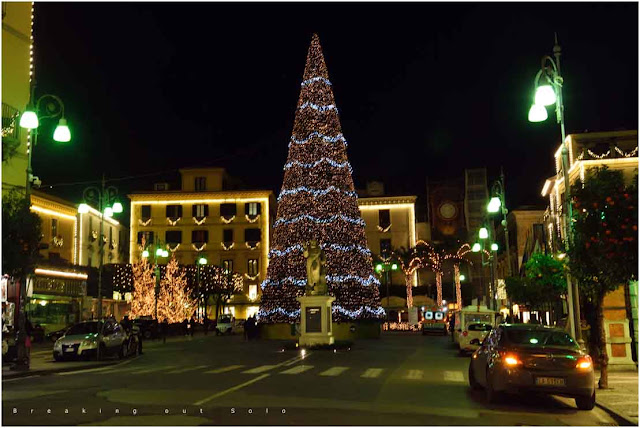 |
| Christmas in Piazza Tasso |
 |
| Church of Carmine Piazza Tasso in Sorrento |
 |
| Church of Carmine Piazza Tasso in Sorrento |
"Was hungry and walked into this random pizzeria just because saw tables laid out with a couple of people. This time of the year, all other restaurants were pretty much empty. Ordered the chef special pizza of the day - 'buffalo' mozzarella, speck and chestnut, and was blown away by the flavours. Looked up the place after I returned and this turned out to be selling the best pizza in town...not surprised :) - Sorrento, Italy — at Pizzeria da Franco."
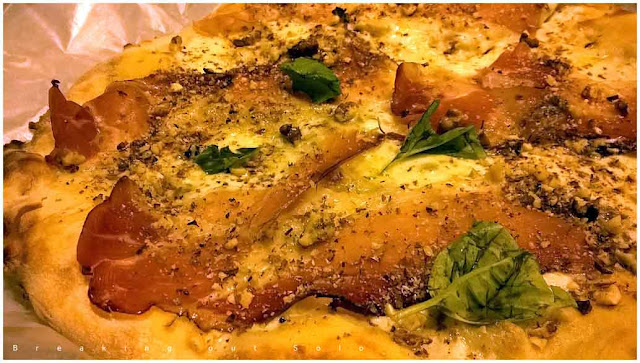 |
| Mozzarella, Speck and Chestnut pizza in Sorrento |
It wasn't just Pompeii which bore the brunt of the Vesuvius about two thousand years ago. Ercolano or Herculaneum, a city far more prosperous was destroyed in the same eruption, but in a different manner. While Pompeii was covered in hot volcanic ashes when the top exploded, Herculaneum fell in the path of the lava as it flowed into the sea. And unlike Pompeii, the excavation in Herculaneum was far more systematic. Most importantly, the artefacts have stayed at site rather than ending up in Naples National Archaeological Museum. The nature of the destruction and the excavation has resulted in better preserved ruins in Herculaneum, albeit smaller. I was undecided which one to visit. Though separated by only a short distance, I won't have time for both in my short itinerary. Finally it was pure logic. I had always wanted to see Pompeii, so that's where I will be.
My initial plan was to spend the morning in Pompeii and then go up to Mount Vesuvius in the afternoon. It all changed when I met an Israeli couple at the B&B. They were heading for Vesuvius first and invited me to join them. I agreed. But I had to get the train tickets first and the ticket counter in Sant' Agnello was yet to open. Using my limited Italian figured out I had to get it from the bar across the road. But then they had run out of tickets to Pompeii Scavi, so instead purchased tickets for Naples which was expensive by a couple of Euros.
The decision to join the Israeli couple was sensible. I had earlier planned to avail the bus service between Pompeii and Vesuvius, which according to internet should have been quite regular. Apparently this service does not run during winter months and a taxi is the only option which leaves from beside the train station. Sharing and a little bargaining made the journey much cheaper at 25 Euros per head. Angelo, our driver was probably in his 70s and was very forceful about taking photographs at every place he stopped. There was no escaping.
The views from Vesuvius was breathtaking, Naples on the right, Sorrento and Capri to the left. It was a beautiful clear day. The Israeli couple I met had been trying to come up for the past two days, but found the crater closed due to bad weather. They said I was lucky. Though sunny, it was bitterly cold. I put on all my layers, yet felt as if my fingers would fall off. A final layer of my parka eventually helped, but by now I was resembling a badly packed tent. The climb was at a comfortable gradient for less than a kilometre. Standing at the edge of a crater where gas still spewed from the cracks and a strong smell of sulphur hung in the air, it was a constant reminder how active the volcano still was, biding its time to explode again. If it did it could destroy the massive city sprawling below. Considering the disaster it could be, Vesuvius is rated as the most dangerous volcano in the world. It is possible to walk halfway around the edge of the crater but by now clouds had moved in and it was snowing heavily. We headed back.
We needed coffee to warm us up after the freeze. Angelo gifted each of us a souvenir photograph of the Vesuvius. He seemed very pleased, especially with the couple. They had given in to all his requests to click. These people were indeed one of the best I have met on my journeys, kind, friendly, helpful with a great sense of humour. They invited me to be their house guest in Israel where they would be my personal guide. I was excited. Unfortunately, I lost their email address so the idea never took shape.
Five minutes inside the ruins and I lost my bearing. Fortunately found a member of staff. I had some idea about the sites to visit from the guidebook I had got the week before - Pompeii: Guide to the Site. She marked these places on the map and also suggested the ones she thought were a must see. Most were in the Zones I, VI, VII, VIII and IX. I also wanted to visit the amphitheatre which was the furthest in Zone II. Her suggestions were extremely helpful as definitely a proper plan is needed to make the most of the visit in a short time. She also marked out the places she knew were closed for maintenance. I was on my way.
Pompeii was overwhelming. As I write this post I can still feel the same excitement as I felt all those months ago. It is the excitement of walking the same streets the inhabitants of this doomed town walked about two thousand years ago, where every moment of their life was frozen in time. Outside the tourist months, the rush was non-existent. The site closes at five in the evening. By half four, the last tour group had left and I was suddenly alone, standing at the forum with not a soul in sight. It is very difficult to explain how I felt, but walking through those empty stone streets, now completely quiet, I could almost feel the vibes of a two thousand years old town, a chill running down my spine. This is what I posted on my Facebook page that night.
"Apparently it is possible to see the main points of interests in Pompeii within 3-4 hours and even take a break in the middle. Either I was not doing the main sights or I had been really slow, which I wasn't. Spent four and half hours today, and I wish I had more. Realistically speaking, it begs for at least a day just for the main sites and then you could end up spending days visiting the ruins in detail if you wish to.
For me, when I think Roman architecture, I think big, grand, extravagant...but then that's how the Romans lived in Rome, the posh guys living in what they reckoned as the centre of the universe.
Pompeii, though not Rome, was an affluent port town, where a life less ordinary survived the everyday struggles of what life puts forward. A town inhabited by the commoners, the daily bread earner as well as the affluent, both the cogs of a well oiled economic machine. A town supporting the lives of its residents and the visitors to the port, the sailors travelling from far and wide. And all of that frozen in time by a volcanic eruption about 2000 years ago.
The benefits of off season travel is you get many of the places to yourself, easier to imagine how it might have been all those centuries ago. The downside is, in a place like Pompeii that requires regular maintenance and where new excavations are still on, this is the best time to close them to visitors. I am not complaining as I struggled with whatever there was to see. To help me with the place, I had purchased a guide book last week and had a quick skim through it. That was of immense help. Internet sites said the tickets come with a small guide book and sometimes you had to ask for it. This doesn't seem to be the case now. I asked and no guidebooks were provided. They do provide a map though and there were staff at all the main sites, eager to provide more information if anyone asked for it. A guide is not needed at all.
The guidebook also said, be ready to be overwhelmed, even if you think you know what to expect. That was so true, even for a place stripped down to its bare bones. Walking through the boulder streets it is so easy to be lost in the age, you surely can almost see and feel the 1st century Roman port life living all around you without much effort, such is the charm of the place.
An amazing, amazing place! — at Pompeii Scavi, Italia."
Though a few sites on my list were closed for maintenance, Pompeii had not disappointed me.
I would be starting for Naples around two in the afternoon, meant I had the whole morning. I thought of visiting Amalfi Coast. The first bus was around half eight in the morning. But the locals put me off with the warning that I could be stranded in case a strike happened.
Instead, spent the morning walking around Sorrento. And of course sampling some Sfogliatella.
My initial plan was to spend the morning in Pompeii and then go up to Mount Vesuvius in the afternoon. It all changed when I met an Israeli couple at the B&B. They were heading for Vesuvius first and invited me to join them. I agreed. But I had to get the train tickets first and the ticket counter in Sant' Agnello was yet to open. Using my limited Italian figured out I had to get it from the bar across the road. But then they had run out of tickets to Pompeii Scavi, so instead purchased tickets for Naples which was expensive by a couple of Euros.
The decision to join the Israeli couple was sensible. I had earlier planned to avail the bus service between Pompeii and Vesuvius, which according to internet should have been quite regular. Apparently this service does not run during winter months and a taxi is the only option which leaves from beside the train station. Sharing and a little bargaining made the journey much cheaper at 25 Euros per head. Angelo, our driver was probably in his 70s and was very forceful about taking photographs at every place he stopped. There was no escaping.
Mount Vesuvius
The views from Vesuvius was breathtaking, Naples on the right, Sorrento and Capri to the left. It was a beautiful clear day. The Israeli couple I met had been trying to come up for the past two days, but found the crater closed due to bad weather. They said I was lucky. Though sunny, it was bitterly cold. I put on all my layers, yet felt as if my fingers would fall off. A final layer of my parka eventually helped, but by now I was resembling a badly packed tent. The climb was at a comfortable gradient for less than a kilometre. Standing at the edge of a crater where gas still spewed from the cracks and a strong smell of sulphur hung in the air, it was a constant reminder how active the volcano still was, biding its time to explode again. If it did it could destroy the massive city sprawling below. Considering the disaster it could be, Vesuvius is rated as the most dangerous volcano in the world. It is possible to walk halfway around the edge of the crater but by now clouds had moved in and it was snowing heavily. We headed back.
 |
| Naples from Vesuvius |
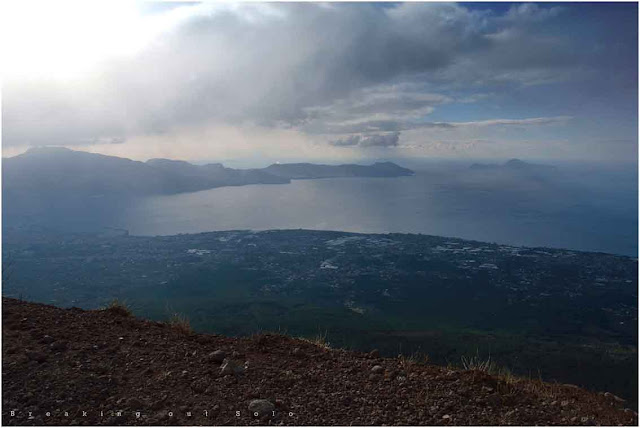 |
| Sorrento and Capri from Vesuvius as the snow clouds start to move in |
 |
| A dormant volcano, spewing gases |
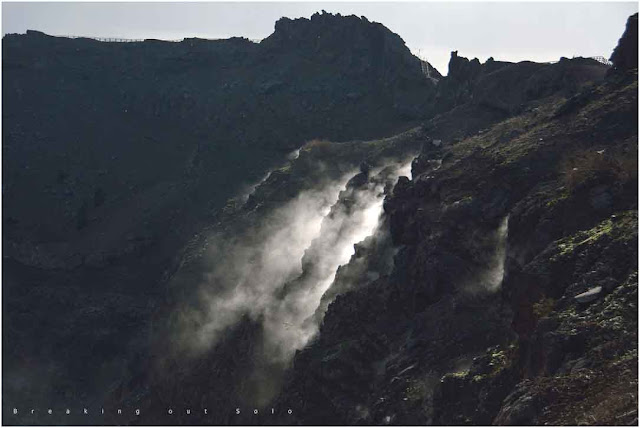 |
| Vesuvius |
 |
| Coffee break outside Pompeii Scavi |
Pompeii Scavi
Five minutes inside the ruins and I lost my bearing. Fortunately found a member of staff. I had some idea about the sites to visit from the guidebook I had got the week before - Pompeii: Guide to the Site. She marked these places on the map and also suggested the ones she thought were a must see. Most were in the Zones I, VI, VII, VIII and IX. I also wanted to visit the amphitheatre which was the furthest in Zone II. Her suggestions were extremely helpful as definitely a proper plan is needed to make the most of the visit in a short time. She also marked out the places she knew were closed for maintenance. I was on my way.
Pompeii was overwhelming. As I write this post I can still feel the same excitement as I felt all those months ago. It is the excitement of walking the same streets the inhabitants of this doomed town walked about two thousand years ago, where every moment of their life was frozen in time. Outside the tourist months, the rush was non-existent. The site closes at five in the evening. By half four, the last tour group had left and I was suddenly alone, standing at the forum with not a soul in sight. It is very difficult to explain how I felt, but walking through those empty stone streets, now completely quiet, I could almost feel the vibes of a two thousand years old town, a chill running down my spine. This is what I posted on my Facebook page that night.
"Apparently it is possible to see the main points of interests in Pompeii within 3-4 hours and even take a break in the middle. Either I was not doing the main sights or I had been really slow, which I wasn't. Spent four and half hours today, and I wish I had more. Realistically speaking, it begs for at least a day just for the main sites and then you could end up spending days visiting the ruins in detail if you wish to.
For me, when I think Roman architecture, I think big, grand, extravagant...but then that's how the Romans lived in Rome, the posh guys living in what they reckoned as the centre of the universe.
Pompeii, though not Rome, was an affluent port town, where a life less ordinary survived the everyday struggles of what life puts forward. A town inhabited by the commoners, the daily bread earner as well as the affluent, both the cogs of a well oiled economic machine. A town supporting the lives of its residents and the visitors to the port, the sailors travelling from far and wide. And all of that frozen in time by a volcanic eruption about 2000 years ago.
The benefits of off season travel is you get many of the places to yourself, easier to imagine how it might have been all those centuries ago. The downside is, in a place like Pompeii that requires regular maintenance and where new excavations are still on, this is the best time to close them to visitors. I am not complaining as I struggled with whatever there was to see. To help me with the place, I had purchased a guide book last week and had a quick skim through it. That was of immense help. Internet sites said the tickets come with a small guide book and sometimes you had to ask for it. This doesn't seem to be the case now. I asked and no guidebooks were provided. They do provide a map though and there were staff at all the main sites, eager to provide more information if anyone asked for it. A guide is not needed at all.
The guidebook also said, be ready to be overwhelmed, even if you think you know what to expect. That was so true, even for a place stripped down to its bare bones. Walking through the boulder streets it is so easy to be lost in the age, you surely can almost see and feel the 1st century Roman port life living all around you without much effort, such is the charm of the place.
An amazing, amazing place! — at Pompeii Scavi, Italia."
Sorrento
Though a few sites on my list were closed for maintenance, Pompeii had not disappointed me.
I would be starting for Naples around two in the afternoon, meant I had the whole morning. I thought of visiting Amalfi Coast. The first bus was around half eight in the morning. But the locals put me off with the warning that I could be stranded in case a strike happened.
Instead, spent the morning walking around Sorrento. And of course sampling some Sfogliatella.




